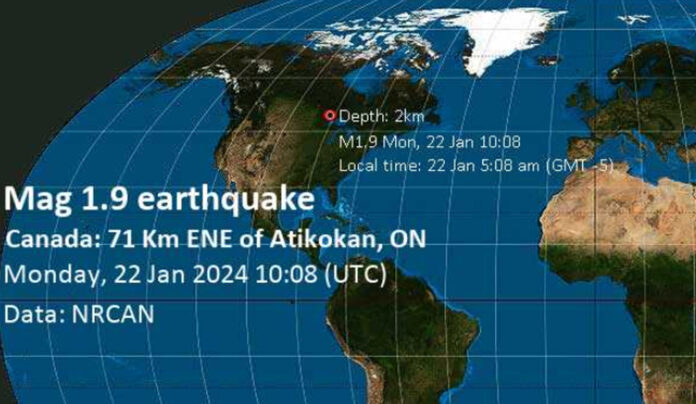ATIKOKAN – CLIMATE – In the early hours of Monday, January 22, 2024, at precisely 5:08 am local time, a minor earthquake with a magnitude of 1.9 gently shook the area 71 kilometers east-northeast of Atikokan.
According to geological experts, the tremor occurred at a very shallow depth of just 2 kilometers, or approximately 1.2 miles.
There were no reports of the quake being felt by residents in the region, underscoring its minimal impact.
This minor seismic event offers insight into the unique geological characteristics of the Canadian Shield, a vast area dominating much of Canada’s landscape, including Northwestern Ontario.
The Canadian Shield, known for its ancient rock formations, is one of the earth’s oldest geological features. While it is generally stable and not prone to frequent or severe earthquakes, minor tremors like this one are not uncommon.
In recent years, Northwestern Ontario has experienced similar minor seismic activities. For example, a light earthquake occurred near Thunder Bay in 2021, with a magnitude of 2.3.
These events, though small, are significant in understanding the region’s geological history and the ongoing processes shaping the earth beneath us.
Earthquakes, in general, are caused by the movement of tectonic plates – the massive rock slabs that make up Earth’s surface. While most significant earthquakes occur at the boundaries of these plates, intra-plate earthquakes like the one near Atikokan can happen as well.
These are often due to stresses within a tectonic plate. The shallow depth of the Atikokan earthquake suggests a release of such stresses within the North American plate.
The occurrence of such a light earthquake is a gentle reminder of our planet’s dynamic nature. It underscores the importance of geological studies in understanding Earth’s processes and preparing for more significant seismic events, even in areas not typically known for high seismic activity.







